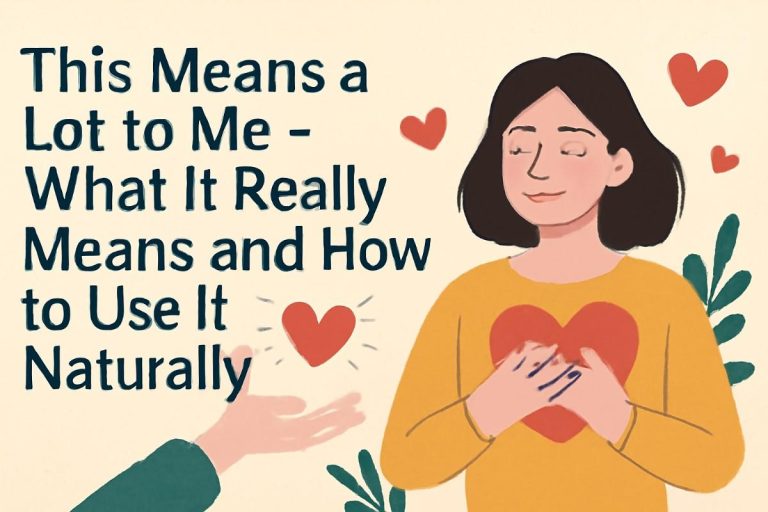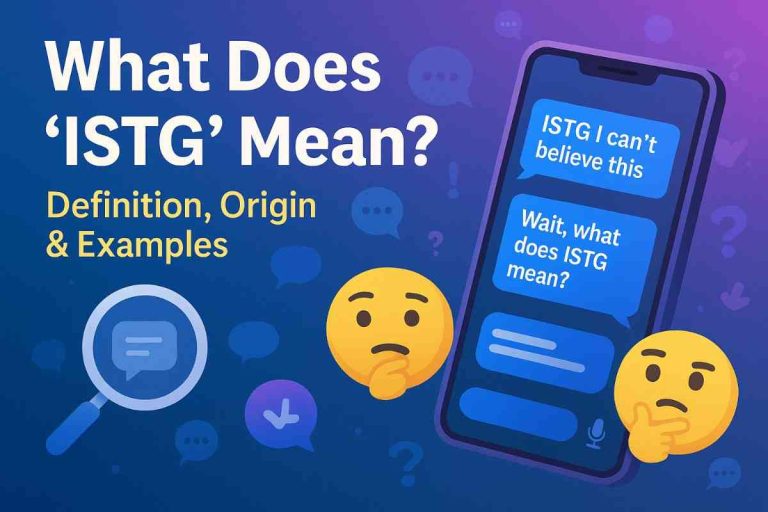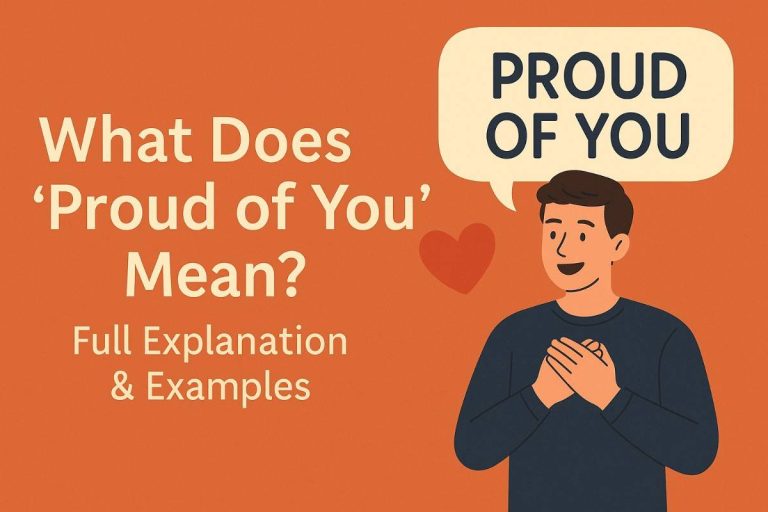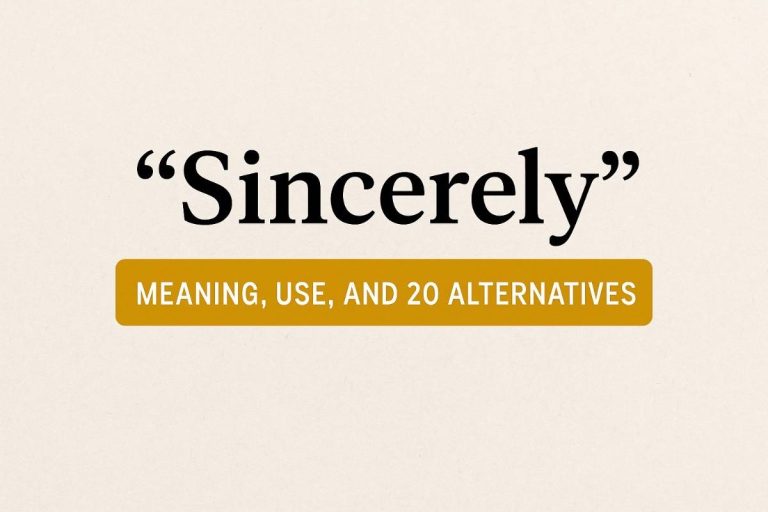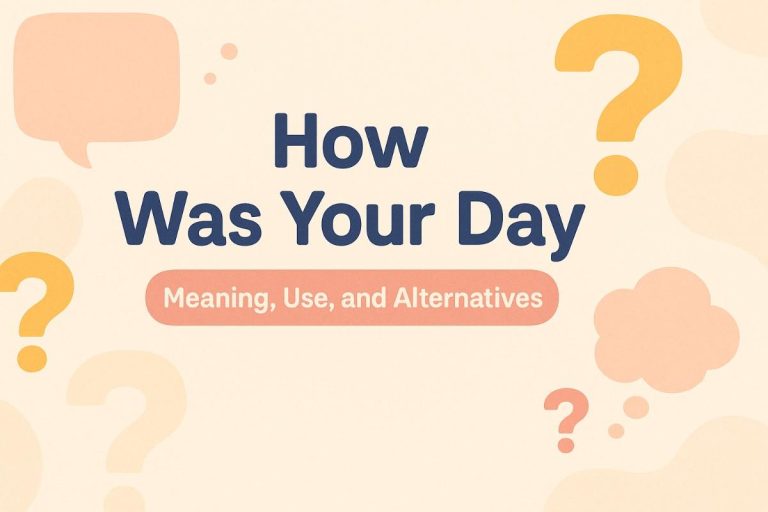Pleasure Meeting You’ Meaning, Use Cases, and Alternatives for Better Conversations
You shake hands, share a smile, and someone says, “Pleasure meeting you.” It’s one of those phrases you hear often, but do you ever pause to think about what it actually means? More than just a polite formality, this phrase carries subtle nuances about respect, connection, and social awareness.
In this article, we’re breaking it all down—what “Pleasure meeting you” really means, when to use it, and how it fits in various conversations, both in person and online. Plus, we’ll explore 28 different ways to say it depending on the tone, formality, or context. Ready? Let’s make every first impression count.
What Does “Pleasure Meeting You” Mean?
At its core, “Pleasure meeting you” is a polite expression used after meeting someone for the first time. It implies you enjoyed the interaction, no matter how brief. It can be friendly or professional, depending on tone and delivery.
The phrase often acts as a soft close to an initial conversation—like the verbal version of a warm handshake.
Definition: A courteous phrase expressing appreciation for having met someone.
Tone: Neutral to warm. Polite. Often formal but adaptable.
Scenario Example:
You’ve just finished a brief intro call with a potential client. As the call ends, you say, “It was a pleasure meeting you. I look forward to staying in touch.”
Best Use: Use when wrapping up a first meeting—whether in business, networking, or a social setting.
Also Read – Thank You for Your Quick Response – Meaning, Use Cases & Examples
When and Where to Say “Pleasure Meeting You”
Let’s be honest—timing matters. Use the phrase too early, and it feels rushed. Use it at the wrong moment, and it sounds forced. But used well? It creates a graceful, confident exit.
Where to use it:
- At the end of job interviews
- During networking events
- After sales or discovery calls
- Social introductions (e.g., weddings, conferences)
- Online or email correspondence
When to say it:
- After the first meaningful interaction
- When leaving a conversation
- In closing remarks
Pro tip: Make sure you say it after something has been shared. Otherwise, it sounds robotic.
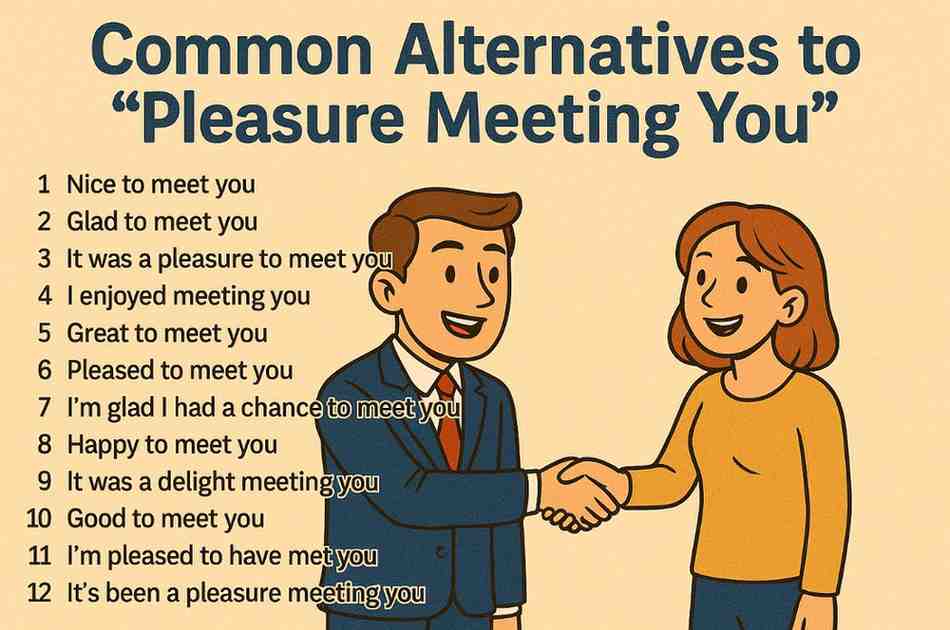
28 Alternatives to “Pleasure Meeting You”
Each of these phrases serves a similar purpose but fits slightly different tones, industries, or vibes. Let’s break them down.
1. Nice to meet you.
Meaning: Standard greeting after meeting someone new.
Tone: Neutral, universally accepted.
Example: “Nice to meet you, Sarah. Thanks for your time today.”
Best Use: Any first-time meeting, informal to professional.
2. Great meeting you.
Meaning: Shows enthusiasm.
Tone: Friendly, upbeat.
Example: “Great meeting you at the seminar yesterday!”
Best Use: Networking, events.
3. It was lovely meeting you.
Meaning: Adds a personal, kind touch.
Tone: Warm, slightly formal.
Example: “It was lovely meeting you. Hope to connect again soon.”
Best Use: Social settings, hospitality, customer relations.
4. Enjoyed our conversation.
Meaning: Focuses on the quality of the interaction.
Tone: Engaged, thoughtful.
Example: “Really enjoyed our conversation. Let’s stay in touch.”
Best Use: One-on-ones, interviews.
5. A pleasure to connect.
Meaning: Slightly modern take.
Tone: Professional yet easygoing.
Example: “A pleasure to connect, Brian. I’ll follow up via email.”
Best Use: LinkedIn messages, emails.
6. Delighted to meet you.
Meaning: Expresses higher enthusiasm.
Tone: Formal to cheerful.
Example: “Delighted to meet you! Your talk was inspiring.”
Best Use: Conferences, formal events.
7. I’m glad we met.
Meaning: Personal and reflective.
Tone: Casual, sincere.
Example: “I’m glad we met. That was a fun discussion.”
Best Use: Social conversations, casual networking.
8. It’s been a pleasure.
Meaning: Classic and timeless.
Tone: Neutral to warm.
Example: “It’s been a pleasure. Take care!”
Best Use: All-around use, works well in person and email.
9. Great chatting with you.
Meaning: Conversational.
Tone: Casual and friendly.
Example: “Great chatting with you during lunch!”
Best Use: Casual meetups, coworking events.
10. It’s been great meeting you.
Meaning: Emphasizes experience.
Tone: Upbeat.
Example: “It’s been great meeting you. Safe travels!”
Best Use: Conferences, mixers.
11. Good to finally meet you.
Meaning: Acknowledges previous contact.
Tone: Warm and connected.
Example: “Good to finally meet you after all the emails!”
Best Use: Online-to-in-person transitions.
12. Thanks for your time.
Meaning: Appreciates the effort.
Tone: Polite and respectful.
Example: “Thanks for your time today. It was a pleasure.”
Best Use: Interviews, consultations.
13. I’ve heard great things.
Meaning: Adds familiarity.
Tone: Friendly, admiring.
Example: “I’ve heard great things. So glad we finally met.”
Best Use: Industry intros.
14. Honored to meet you.
Meaning: Shows deep respect.
Tone: Formal.
Example: “Honored to meet you, Judge Martinez.”
Best Use: Ceremonial or prestigious settings.
15. Glad to put a face to the name.
Meaning: Practical and relatable.
Tone: Informal.
Example: “Glad to put a face to the name, Mike!”
Best Use: Post-email meetings.
16. Nice running into you.
Meaning: For unplanned meetings.
Tone: Casual.
Example: “Nice running into you at the market!”
Best Use: Serendipitous encounters.
17. Nice seeing you again.
Meaning: When you’ve met before.
Tone: Familiar.
Example: “Nice seeing you again at the event!”
Best Use: Reunions, second meetings.
18. Always a pleasure.
Meaning: Familiar and warm.
Tone: Friendly, repeated contact.
Example: “Always a pleasure, Emily.”
Best Use: Regular contacts.
19. Thanks for meeting with me.
Meaning: Gratitude-forward.
Tone: Professional.
Example: “Thanks for meeting with me. Let’s connect again soon.”
Best Use: Sales calls, check-ins.
20. A real pleasure.
Meaning: Sincere and heartfelt.
Tone: Warm.
Example: “It was a real pleasure speaking with you.”
Best Use: One-on-one chats.
21. I’ll remember this conversation.
Meaning: Deeply appreciative.
Tone: Reflective.
Example: “I’ll remember this conversation. Thank you.”
Best Use: Impactful meetings.
22. Felt like we really clicked.
Meaning: Highlights chemistry.
Tone: Casual, intimate.
Example: “Felt like we really clicked—thanks for your time!”
Best Use: Peer-to-peer networking.
23. I value this connection.
Meaning: Emphasizes importance.
Tone: Thoughtful.
Example: “I value this connection. Hope to collaborate.”
Best Use: Post-networking follow-up.
24. Thanks for introducing yourself.
Meaning: Shows openness.
Tone: Friendly, receptive.
Example: “Thanks for introducing yourself. Great to meet you!”
Best Use: Events, casual meetups.
25. Let’s keep in touch.
Meaning: Signals future contact.
Tone: Friendly, future-minded.
Example: “Let’s keep in touch. Enjoy the rest of the conference!”
Best Use: End of conversation.
26. Until next time.
Meaning: Leaves door open.
Tone: Neutral to warm.
Example: “Until next time. It was a pleasure.”
Best Use: Parting words.
27. I’ll be in touch.
Meaning: Indicates follow-up.
Tone: Professional.
Example: “I’ll be in touch with next steps.”
Best Use: Business settings.
28. Let’s reconnect soon.
Meaning: Shows interest in a second meeting.
Tone: Forward-looking.
Example: “Let’s reconnect soon. Take care.”
Best Use: Sales, mentorship, networking.
Is It Correct to Say “Pleasure Meeting You”?
Short answer: Yes, it’s absolutely correct. But grammar purists might argue it’s shorthand for a fuller phrase like, “It was a pleasure meeting you.”
On its own, “Pleasure meeting you” is informal and widely accepted in speech. In writing, it’s usually better to say the full version.
Quick tip: Add “It was a” to make it more polished: “It was a pleasure meeting you.”
Email and Text Etiquette: Using “Pleasure Meeting You” in Writing
Email tone can be tricky. “Pleasure meeting you” feels friendly, but without tone of voice or body language, it can sound flat.
Make it work better:
- Always include context: “It was a pleasure meeting you during Tuesday’s onboarding call.”
- Pair with a follow-up: “Looking forward to working together.”
In emails, try these variants:
- “It was lovely meeting you at [event name].”
- “I really appreciated your insights today.”
- “Thanks again for meeting with me.”
Text messages?
Keep it brief: “Pleasure meeting you! Let’s catch up soon.”
Conclusion
First impressions matter. Whether you’re writing a thank-you email, chatting at a conference, or wrapping up a Zoom call, the way you say goodbye can stick just as much as how you said hello.
“Pleasure meeting you” is more than a polite ending—it’s a subtle connector, a way of saying, “Hey, this mattered.”
Choose the version that fits your tone, your audience, and your intention. When you say it right, it doesn’t just end the conversation—it opens a door.
So the next time you meet someone new, don’t just say goodbye. Say it with meaning.


